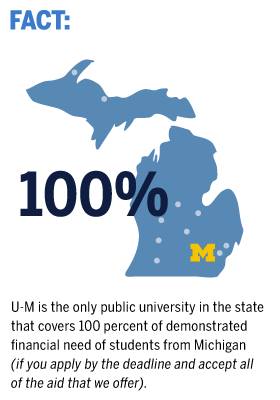 Applying for financial aid is perhaps the most important, and most complex, task many a high school senior will undertake. To help academically talented students sort through this process, the Cook Family Foundation is holding a workshop on Monday, January 19 from 7-9 p.m. at the Baker College Welcome Center.
Applying for financial aid is perhaps the most important, and most complex, task many a high school senior will undertake. To help academically talented students sort through this process, the Cook Family Foundation is holding a workshop on Monday, January 19 from 7-9 p.m. at the Baker College Welcome Center.
Mike Davis from the University of Michigan Office of Financial Aid will provide important information about qualifying for financial aid, as well as some useful tips on making college more affordable. U-M is the only public university in Michigan to cover 100 percent of demonstrated financial need of in-state students (learn more here)
While Mike Davis gives particular insight to financial aid from the University of Michigan, his presentation will be applicable no matter what four-year university a student ends up attending. The first step for any prospective college student is to fill out the FAFSA (Free Application for Federal Student Aid), the form used by all institutions of higher learning. To qualify for financial aid from UM, students and their families will also need to complete a CSS Profile.
Students and/or their parents are invited to attend the January 19 workshop. While it is not necessary to RSVP, please contact us if you have questions (989-725-1621 or bruce@cookfamilyfoundation.org). To keep up-to-date on financial aid, scholarships, and other UM information follow us on Twitter @GoBlueGoBruce



